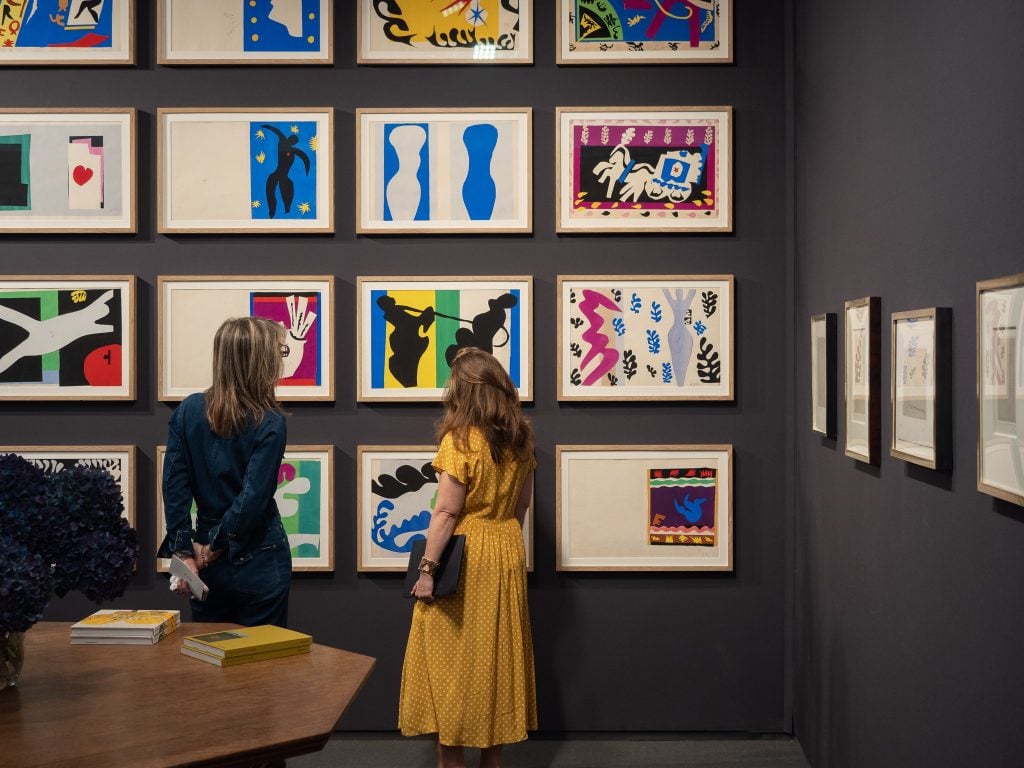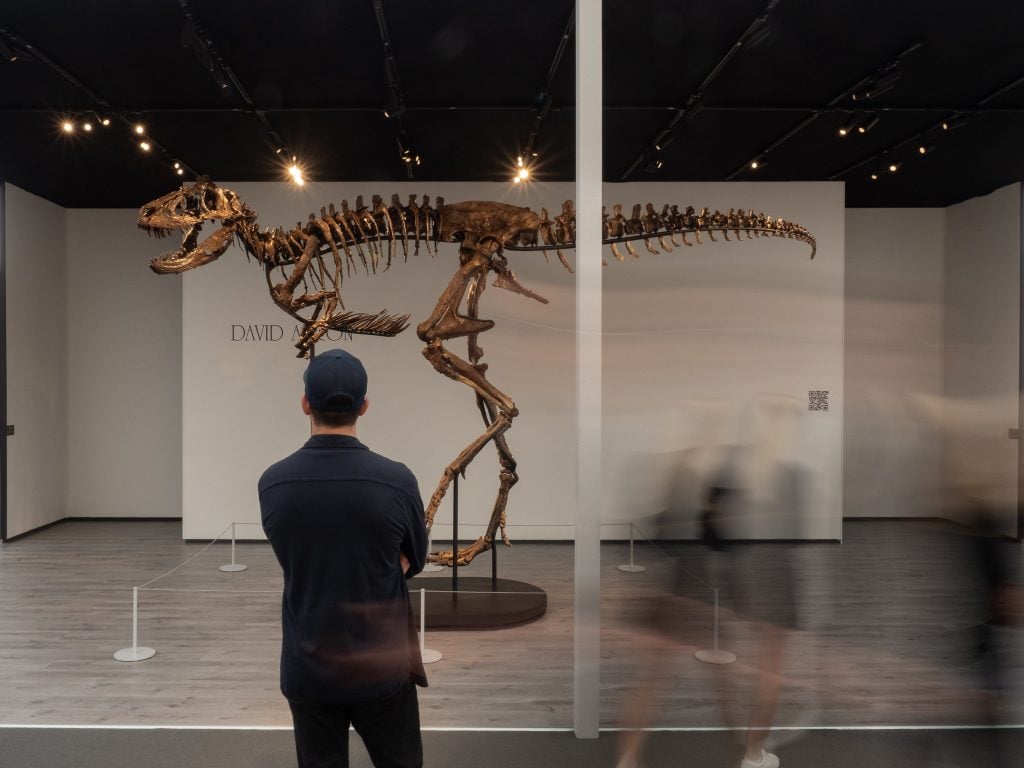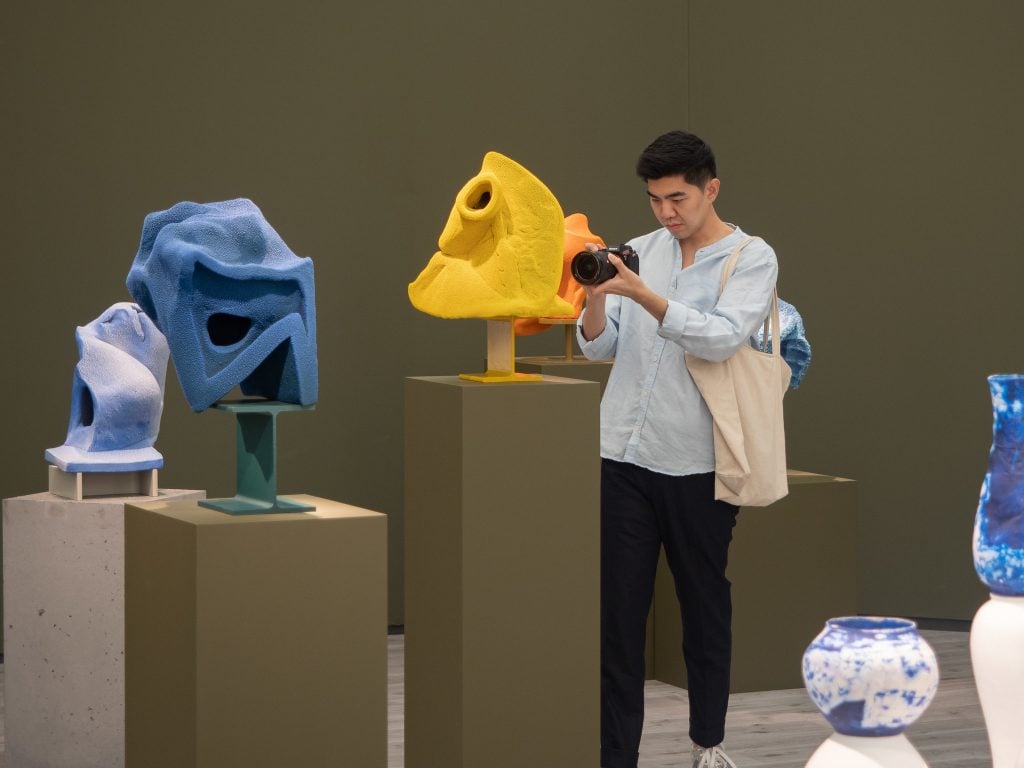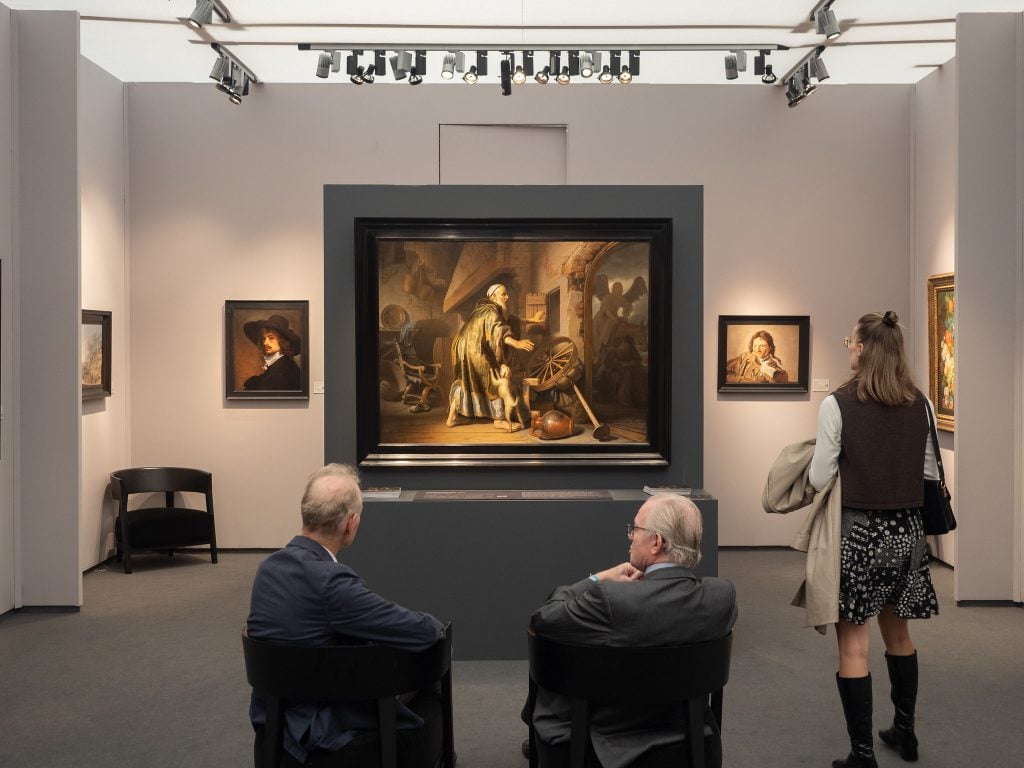Art Fairs
On Its First Day, Frieze Masters Saw Bigger Crowds and More Curated Booths. But Economic and Geopolitical Woes Dragged Down Sales
Some dealers said the market correction is healthy and much needed.

Some dealers said the market correction is healthy and much needed.

Vivienne Chow

Frieze Masters has always been known for its calmness and elegance, but when it opened today (October 11) at Regent’s Park, this was no longer the case. The aisles were jam-packed and the spirit was high, but that vibe did not automatically translate into stunning sales.
Artworks and treasures from the palaeolithic era to the 20th century filled the fairgrounds for Frieze Masters VIP preview, with attendees immersed in conversation among themselves and with dealers asking about prices and provenance. The fair felt much more crowded than in the past two years—understandably—and the enthusiasm was palpable.
But when it came to inking a deal, the optimism ground to a halt. Traditionally, sales at Frieze Masters do not move as quickly as at its contemporary sister fair, but even with that in mind some dealers and market watchers said sales were obviously slower than in earlier years. Higher interest rates, economic uncertainty, the outbreak of the new Israel-Hamas war, and the ongoing war in Ukraine seemed to weigh on fairgoers’ willingness to plunk down their money.
“The quality is as high as ever, but maybe not surprisingly, a large number of important works failed to sell by late afternoon,” said Manuel Gerber, a partner of Zurich-based art advisory Gerber & Stauffer Fine Arts. “It would be premature to speak of a market correction but at the very least, buyers are taking a lot more time to decide.”

Baby T-Rex at Frieze Masters. Courtesy of Frieze Masters.
There’s no lack of big-ticket works on show at Frieze Masters, which brings together exhibitions from more than 130 galleries this year. Among the most expensive works is a Rembrandt painting titled Blind Tobit, with the return of Tobias and the archangel Raphael (c. 1628-29), with a price tag of €28 million at Zurich’s Koetser Gallery, and a set of juvenile T-Rex fossils with an asking price of $20 million brought by London-based dealer David Aaron.
Saloman Lilian from Geneva showed Frans Hals’ Portrait of a 50 Year Old Man (1635) to coincide with the National Gallery’s survey show of the artist. The work, which has not been shown publicly in 112 years, is selling for €10 million. London-based Simon C. Dickinson showed Lucian Freud’s Profile Donegal Man (2008), which has an asking price of £15 million. Lyndsey Ingram, also from London, is selling a set of Matisses from the artist’s “Jazz” portfolio in excess of $10 million.
“The economy and political environment are not easy. This year has already been a difficult year because of the [higher] interest rates,” said dealer Stéphane Custot, co-founder of London gallery Waddington Custot.

Frieze Masters 2023. Courtesy of Frieze Masters.
Custot pegged the market for modern art at down by 10 to 15 percent, and said that for contemporary art the dip was even bigger. However, he isn’t unhappy about the market mood. “This is a much needed healthy adjustment, otherwise it will become a bubble,” he said. “We don’t like bubbles.”
The gallery lowered prices by 10 to 15 percent and managed to sell two Barry Flanagan works on the fair’s VIP day, including a large bronze sculpture for around £750,000 and a stone sculpture in the range of £120,000. “We have to adapt, otherwise we don’t sell,” the dealer said. “It’s a buyer’s market.”
Seoul’s Hyundai Gallery sold four works, including three canvas pieces by Korean artist Shin Sung Hy priced between $23,000 to $150,000. Kó from Lagos sold a painting by Nigerian artist Ben Enwonwu in the range of £180,000 to £250,000.
Meanwhile, Hauser & Wirth unloaded a Louise Bourgeois scultpure for $3 million and a work by Jack Whitten for $950,000, while D’Lan Contemporary sold six works by Emily Kame Kngwarreye for “over $2.5 million,” according to a statement from the fair. Kasmin Gallery sold a painting by Lee Krasner for $675,000, a work by Max Ernst for $400,000, and a work by Wassily Kandinsky for $210,000, per the statement. Galerie Bastian sold a work by Gerhard Richter for €610,000, while Wendi Norris sold a Wolfgang Paalen painting for $375,000 to a private collection.
Sales were not off the charts, but to art lovers, a trip to Frieze Masters was certainly a treat. This year’s edition has more curated sections and booths. “The galleries are making an extra effort to give a focus, to have a curator to contextualize the art they are showing,” said London-based art advisor Liberte Nuti.
Marlborough is presenting a thematic group show titled “The Laughing Torso,” curated by art historian Anke Kempkes. The much-talked about booth features eight artists who changed their female birth names in favor of a male or gender-ambiguous title for various reasons, ranging from challenging their gender identity to escaping political persecution. The show featuring works priced from £6,500 to £350,000 is part of a much bigger project by Kempkes, a former chief curator at Switzerland’s Kunsthalle Basel and Muzeum Susch.

Rembrandt at Koetser Gallery, Frieze Masters 2023. Courtesy Frieze Masters.
The fair also launched its new Studio section this year. Curated by the former chairman of the department of modern and contemporary art at the Met, Sheena Wagstaff, the section explores the role of studios and their role in the career and practice of five artists: Maggi Hambling (Frankie Rossi Art Projects in affiliation with Hazlitt Holland-Hibbert), Mona Hatoum (White Cube), Lucia Laguna (Fortes d’Aloia & Gabriel with Sadie Coles HQ), Arlene Shechet (Pace Gallery), Hyun-Sook Song (Sprüth Magers).
Frieze Masters is also foregrounding women in its 2023 edition. Following last year’s success of the curatorial initiative by AWARE (Archive of Women Artists, Research and Exhibitions) in the Spotlight section, the fair introduced a standalone Modern Women section this year, which presents solo exhibitions of women artists by 11 galleries.
“It is a very important gesture to offer such an opportunity to rediscover women artists who had to live through the era of male dominance,” said Sojung Kung, executive director of Seoul-based Arario Gallery, which presents a solo booth of the late Korean artist Kangja Jung.
Frieze Masters runs through Sunday, October 15.
More Trending Stories: